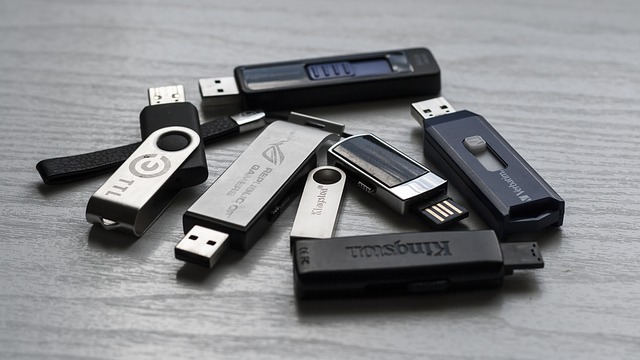
Many users face the issue of a flash drive data recovery. Unfortunately, it’s a common problem that is simply inevitable. Due to various reasons, all users face it. Of course, you do not want to lose photos and other files that may contain essential data.
On average, the loss or corruption of files takes place because of:
- Breaking of the flash drive;
- Damage induced by software;
- Overloading of the drive;
- User’s fault.
At times, we may hit hard or shake off the flash drive. The software may corrupt or we spoil it due to memory overload. Finally, many users accidentally delete files. It’s necessary to use concrete USB recovery software. We won’t claim that certain software is the best. There are many effective tools and you simply should learn how to use them properly.
How-To Geek suggests using different software. Not all can work for your case. The situations differ and what is good for somebody may be totally useless for you. You will have to spend some time to identify the most effective option that can be easily managed and that works properly.
However, it’s quite possible to identify a certain algorithm that is effective for most cases. We have prepared a tutorial for you. Regardless of the software you install, you should undertake the following steps to retrieve data from flash drive:
- Launch a USB disk recovery tool. Study the market and try to define the best tool. Install it to your laptop or computer. It’s necessary to clarify what kind of data storage you want to scan. Find the option “External Devices Recovery” and initiate the process.
- Ensure that you have a stable connection. Oftentimes, the process of data recovery goes amiss because of the poor connection. You should be confident that your flash drive recovery tool has a stable connection. Otherwise, it may be canceled at some point. Afterward, it’ll be impossible to restore data.
- Initiate the process. Click the “Start” button to begin the process. The tool will initiate quick scanning. Study the search results. Choose the files you want to retrieve.
- Use “All-Around Recovery”. It’s a special function that helps when common scanning is useless. At times, quick scanning doesn’t find all the data that was deleted or corrupted. If quick scanning doesn’t give the expected results, use a deeper scanning. It is called All-Around Recovery. It will surely find all deleted or corrupted files. This method guarantees your success. Be patient because it will take more time. Of course, it’s worth a try. You will enjoy 100% success results.
- Define and retrieve data. After you fulfill the searching, get ready to restore the required data. Review the results of scanning. Get through the list of deleted or damaged files. Opt for the necessary ones. The next step is to get them back to the drive. Press the button “Recover”. The files will be recovered instantly.
There is one additional tip. Use a USB data recovery tool carefully. Stick to our recommendations. A Disk Drill for Windows or Mac is no rarity. Learn information about all available tools and choose the most suitable. After you restore the files, save them. Experts advise saving them on other digital storages. Possibly, the files may get lost once again on the old drive if it is damaged or infected with some virus. To avoid this failure, store the files in other places. This is it. There is nothing complicated about the use of a recovery tool. All of them work in the same way. Even a newbie will manage any recovery software.
RELATED ARTICLES
Latest Articles
 How Long To Soak Chia Seeds: A Simple GuideIn TipsFebruary 11, 2025Chia seeds are little round black seeds that have […]
How Long To Soak Chia Seeds: A Simple GuideIn TipsFebruary 11, 2025Chia seeds are little round black seeds that have […] How to Spot Fake Software Licenses and Avoid ScamsIn TechnologyFebruary 4, 2025Image Credit: pexels.com In today’s complex […]
How to Spot Fake Software Licenses and Avoid ScamsIn TechnologyFebruary 4, 2025Image Credit: pexels.com In today’s complex […] What Factors Should Businesses Consider When Choosing A SIP Trunk Provider?In TechnologyFebruary 1, 2025Under the conditions that are related to running a […]
What Factors Should Businesses Consider When Choosing A SIP Trunk Provider?In TechnologyFebruary 1, 2025Under the conditions that are related to running a […] Best ATV Rentals in Dubai for Unforgettable Desert SafarisIn TravelJanuary 29, 2025Image Credit: pexels.com Dubai is a city that offers […]
Best ATV Rentals in Dubai for Unforgettable Desert SafarisIn TravelJanuary 29, 2025Image Credit: pexels.com Dubai is a city that offers […] The Evolution of Paint Protection Film: Innovations You Need to KnowIn TechnologyJanuary 26, 2025Over the years, Paint Protection Film (PPF) has […]
The Evolution of Paint Protection Film: Innovations You Need to KnowIn TechnologyJanuary 26, 2025Over the years, Paint Protection Film (PPF) has […] Your Ultimate Guide to Local SEOIn MarketingJanuary 17, 2025Local SEO can be defined as optimization of the online […]
Your Ultimate Guide to Local SEOIn MarketingJanuary 17, 2025Local SEO can be defined as optimization of the online […] Top 5 Reasons Why the Organic Traffic Is Really Beneficial for BusinessesIn MarketingJanuary 16, 2025Many companies invest heavily in SEO, with the […]
Top 5 Reasons Why the Organic Traffic Is Really Beneficial for BusinessesIn MarketingJanuary 16, 2025Many companies invest heavily in SEO, with the […] Understanding the Power of Spreadsheet Software for Personal and Business UseIn TechnologyDecember 7, 2024In today’s data-driven world, spreadsheet […]
Understanding the Power of Spreadsheet Software for Personal and Business UseIn TechnologyDecember 7, 2024In today’s data-driven world, spreadsheet […] The Summer Learning Loss – 7 Key Aspects You Must Understand in 2025In TipsNovember 29, 2024Every year, students face summer learning loss during […]
The Summer Learning Loss – 7 Key Aspects You Must Understand in 2025In TipsNovember 29, 2024Every year, students face summer learning loss during […] Equity Trading in Global Markets: Key ConsiderationsIn TipsNovember 4, 2024How prepared are you to explore the possibilities that […]
Equity Trading in Global Markets: Key ConsiderationsIn TipsNovember 4, 2024How prepared are you to explore the possibilities that […] Crafting a Standout Resume and Networking Your Way to Jobs in CanadaIn TipsOctober 23, 2024When applying for jobs in Canada, the format of your […]
Crafting a Standout Resume and Networking Your Way to Jobs in CanadaIn TipsOctober 23, 2024When applying for jobs in Canada, the format of your […] How to invest in the future?In TechnologySeptember 27, 2024Who doesn’t want to build up some extra pension […]
How to invest in the future?In TechnologySeptember 27, 2024Who doesn’t want to build up some extra pension […]
stopie.com is a participant in the Amazon Services LLC Associates Program, an affiliate advertising program designed to provide a means for sites to earn advertising fees by advertising and linking to Amazon.com.
Clicking on an Amazon link from stopie.com does not increase the cost of any item you purchase.
We will only ever link to Amazon products that we think our visitors may be interested in and appreciate learning more about.



